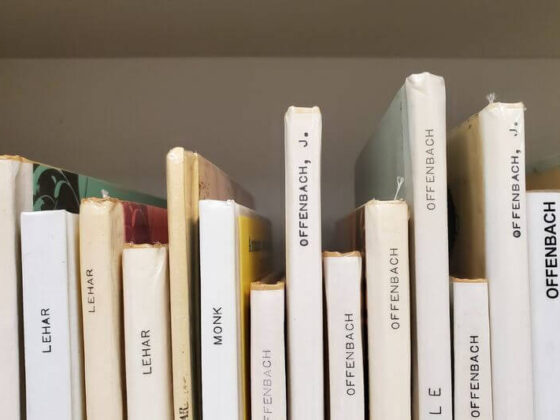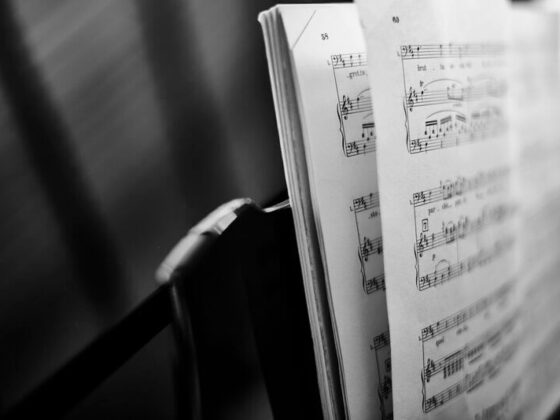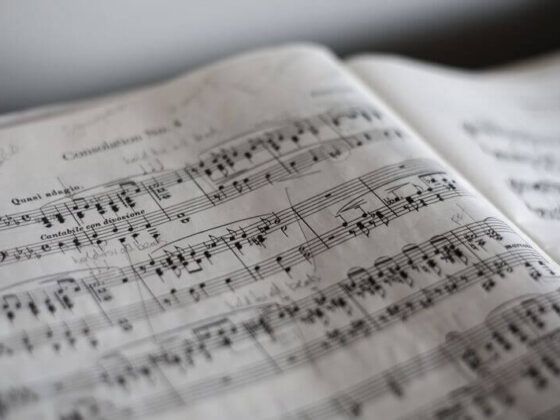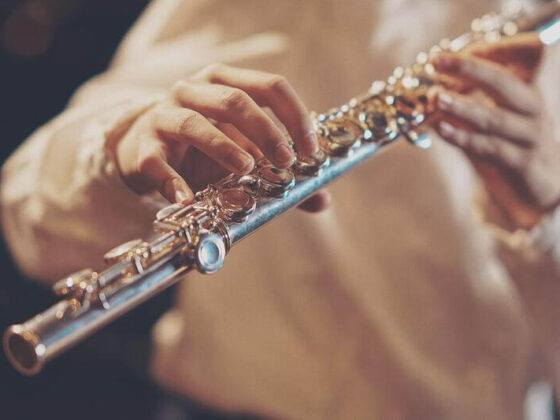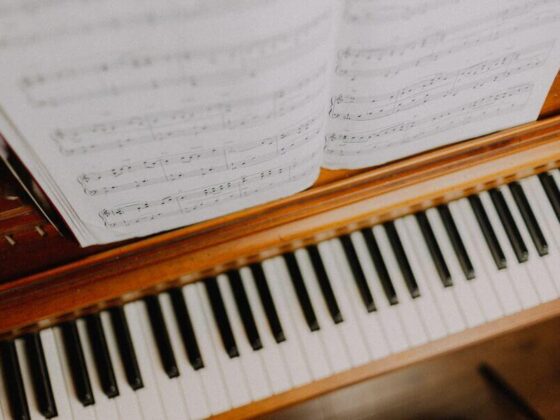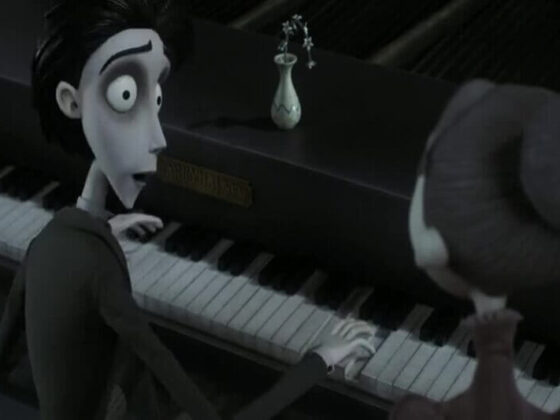Flute and piano duets are a delight to listen to. The soothing sound of the flute paired with the versatility of the piano creates a musical feast that always sounds captivating and beautiful.
Since you’re now on this page, we assume you also like the sound of the flute and piano as much as we do!
To help you decide your next piece with your pianist or flutist duet partner, we’ve listed 17 famous flute and piano duets. Whether you wish to use them for practice or performance, we hope you’ll find what you’re looking for.
Best Piano & Flute Duet Songbooks – Quick Overview
[wptb id="5298" not found ]
Duo for Flute and Piano – Aaron Copland
One of the standard pieces of the flute repertoire, Duo for Flute and Piano is a three-movement duet in pastoral and lyrical style written by the American composer Aaron Copland in 1971.
The piece starts with a slow and serene movement featuring solo flute intervals that evoke the imagery of vast American landscapes. Music gets moodier and calmer in the second movement, then incredibly lively and rhythmic in the third movement with virtuosic passages.
The piece requires an above-intermediate flutist and pianist. The piano has equal importance to the flute, so the performers should be in good harmony and collaboration.
Madrigal for Flute and Piano – Philippe Gaubert
Madrigal for Flute and Piano is one of Gaubert’s best-loved pieces. It’s often played at recitals, competitions, and auditions because it allows the performers to showcase tone and musicality.
The piece is easy to learn and incredibly helpful for improving technique. It features a slow section to practice tone and expressivity, and a fast part to improve speed and technical ability.
Overall, it’s a beautiful duet if you’re looking for an easy piece that flows smoothly and helps with technique.
Flute Sonatas – Johann Sebastian Bach
Although the flute isn’t the first instrument that comes to your mind when it comes to Bach, he actually wrote many works for the flute. His flute sonatas are at the intermediate level.
These sonatas also feature technical challenges like double tonguing that are very helpful for beginner and intermediate players. You can learn whichever sonata you wish, but the E Flat Major is the easiest.
Sonata for Flute and Piano in C – Gaetano Donizetti
This wonderful duet by Donizetti was written in sonata form, though a lively Allegro part following a slow Largo reminds us of the Italian opera ‘overture’. Donizetti was among the most well-known opera composers of the time whose biggest inspiration was Rossini.
This duet is a perfect one to play for intermediate players and above. Except for the largo introduction part, it’s a lively and vivid piece.
The piano and flute perfectly complement each other, which feels like a never-ending dialogue. If you’re an intermediate player, we highly recommend you give it a try!
Sonata for Flute and Piano – Paul Hindemith
A rare gem in the repertoire, Sonata for Flute and Piano by Hindemith is a twentieth-century standard and a staple piece in flute literature. It has also been required in many flute competitions and auditions.
It’s an advanced piece that requires experienced players. Overall, getting the intonation right needs good attention from the flutist. The third movement is technically the most challenging part due to its aggressive character and many virtuosic passages.
The piano accompaniment is not easy either. It requires good attention and technical ability to keep up with the flute. However, it’s also one of the most fun works to play as a duet once you master it.
If you’re looking for a fun and challenging piece that features a wide range of techniques and moods, this duet is a must-play!
Hungarian Pastoral Fantasy, op. 26 – Franz doppler
One of the most fun and beautiful duets on this list, Hungarian Pastoral Fantasy features a number of movements based on Hungarian folk dance styles.
Its composer, Doppler, was a virtuoso flutist of the Romantic period and often composed solo flute works to show off. This piece is no exception because it requires both an advanced flutist and a pianist.
The piece starts with an improvisation-like flute line in a relaxed tempo, though the tempo and liveliness gradually increase throughout the work. The melody also changes from minor key to major as the liveliness build up.
Sonata For Flute and Piano – Francis Poulenc
This work by the French composer Poulenc has a claim to be the most played piece for flute and piano. It was composed in 1957 and is accepted as a prominent work of the 20th-century flute repertoire.
The piece has 3 movements that all feature melodies of the late-romantic French style. The whole work is filled with exciting turns, twists, and colorful harmonies. The second movement, ‘The Cantilena’, is considered to be among the most hauntingly beautiful and sad tunes in the flute repertoire.
If you’re a flutist and haven’t learned this gorgeous piece yet, it’s time to grab your sheet music and call your pianist friend!
Sonata for Flute and Piano – Muczynski
This iconic work can be described in three words: chaos, contrast, and restraint. Polish-American composer Muczynski wrote pieces filled with syncopation and different types of rhythmic challenges, and this sonata for flute and piano is no exception.
This duet contains many interesting rhythms, and the flutist can even practice it without the piano part.
This piece is better suited for advanced players as it features a lot of challenging parts, both technically and musically. However, it’s also incredibly fun and rewarding to play.
Andante Pastoral and Scherzettino – Paul Taffanel
One of the gems in the French flute repertoire, the flutist and composer Taffanel’s duet, Andante Pastoral and Scherzettino is a brilliant piece. Taffanel wrote it as an exercise piece for Paris Conservatoire Concours, and dedicated it to his pupil, Philippe Gaubert.
This vibrant and energetic piece necessitates a nuanced interpretation, especially in terms of technique and sound. While the piece is full of technical challenges, it’s also full of beautiful melodies.
Chant de Linos – André Jolivet
This one-movement piano and flute duet by Jolivet is one of the staple works in the flute repertoire. It’s also one of the essential works in the ABRSM flute Licentiate diploma syllabus, meaning it’s beyond Grade 8 and requires advanced players to perform.
From intense dynamic changes to flutter-tonguing, the work features a variety of techniques. It also requires excellent breath control and a good command of high notes. If you can also overcome some devilishly difficult fingerwork, this piece will be a joy to play!
All in all, this duet is a wonderful one for ambitious players who are up for a challenge.
Suite Modale for Flute and Piano – Ernest Bloch
This piano and flute duet by Bloch is another wonderful work from the 20th century. It was later arranged for flute and string orchestra as well. The term “modale” describes the musical scales and modes in use prior to the widespread usage of major-minor scales.
The work consists of four strongly interlinked movements, allowing performers to play with no breaks in between. Overall, the piece is very melodic with many elegant melodies and beautiful harmonies.
It’s also perfect for intermediate players with an average level of difficulty. We hope you give it a try!
Suite de Trois Morceaux, Op. 116 – Benjamin Godard
Godard’s Suite De Trois Morceaux was written for Paul Taffanel, a renowned French flutist, in 1890. The work is incredibly expressive with a lot of contrasting moods and rich passages, so we highly recommend you listen to it even if you don’t play it!
This duet consists of 3 movements, the first movement being the easiest and the last one the hardest. While maintaining the same romanticism as the preceding sections, the last movement, Valse, demonstrates the flute’s dexterity and technical capacity.
The difficulty level of this piece is intermediate-advanced. If you’re in search of a piece that will be both a good performance and a practice piece, this duet can be a great addition to your repertoire!
Sonata for Flute and Piano – Taktakishvili
Another gorgeous flute and piano duet, this sonata by Taktakishvili is one of the most loved pieces among flutists, and it’s not hard to see why!
The first movement is characterized by a stunning melody that immediately improves my mood whenever I listen to it. The second movement, on the other hand, features an utterly heart-breaking melody that speaks directly to your heart.
This piece is best suited for intermediate and advanced players.
Sonatine for Flute and Piano – Henri Dutilleux
Another standard of the flute repertoire, Sonatine for Flute and Piano is Dutilleux’s most widely performed piece, played by names such as James Strauss and Emmanuel Pahun. Interestingly, Dutilleux was quite critical of this work as most of his early works and never wanted it to be played this often.
This duet consists of 3 movements and is characterized by alternating pastoral melodies between the two instruments. While the first movement features a mysterious theme, the last one is full of vivid exchanges.
We highly recommend advanced players add this piece to their repertoire!
Sonata for Flute and Piano – Bohuslav Martinu
Composed by the Czech composer Martinu, this flute and piano duet is an ABRSM diploma piece, which is the level after grade 8 and requires an advanced player to pull it off. This piece is also known as the ‘First Sonata for Flute and Piano’, though Martinu didn’t compose a second one.
Consisting of 3 movements, the sonata features a sandwich-like structure with lively and rhythmic outer movements and the lyrical second movement.
Though it’s difficult, it’s a very lovely piece with constant rhythmic dialogues between the flute and the piano. It also calls for a good balance between the duet partners.
Fantaisie for Flute & Piano, Op. 79 – Gabriel Fauré
This fantasy by Faure is one of the staple pieces of the flute repertoire. As with most of the works on this list, it is again at the diploma level for most music examinations. The piece also has arrangements for string orchestra and flute.
The 5-minute duet is incredibly helpful for gaining virtuosic skills as it improves phrasing, tone control, and expression. Our favorite thing about this piece is its impressionistic form and harmony.
If you’re an advanced player, we highly recommend you explore this elegant piece!
Concertino for Flute, Op.107 – Cécile Chaminade
Concertino for Flute, Op. 107 was composed by Chaminade as an examination piece for students for the Paris Conservatoire Concours in 1902. It remains the most popular piece of Chaminade and the whole flute repertoire. Chaminade later arranged it for the flute and orchestra as well.
The concertino starts with an ornamental flute solo section that is quite demanding. Overall, however, the work is not as hard as it seems except for certain parts. Once those parts are overcome with good practice, the rest of the piece can even be performed by intermediate-level duet partners.
Pin it!






